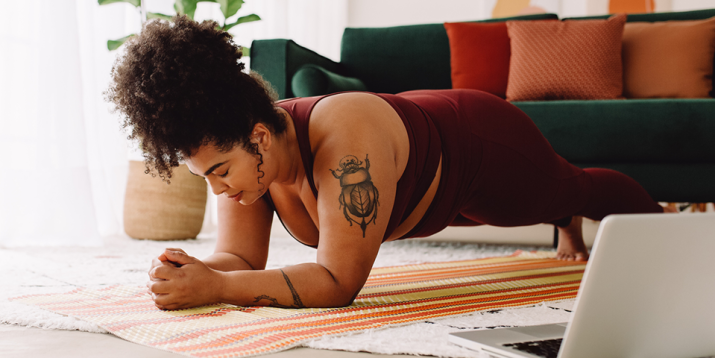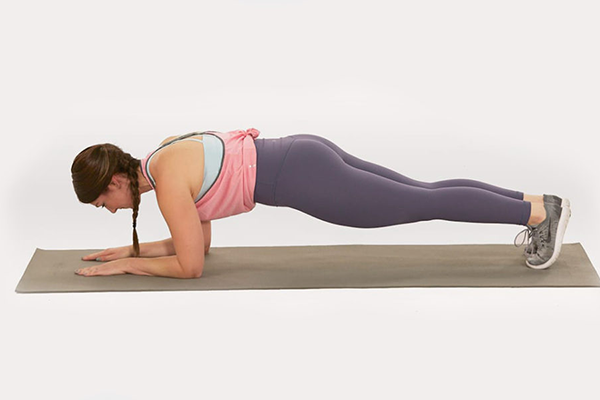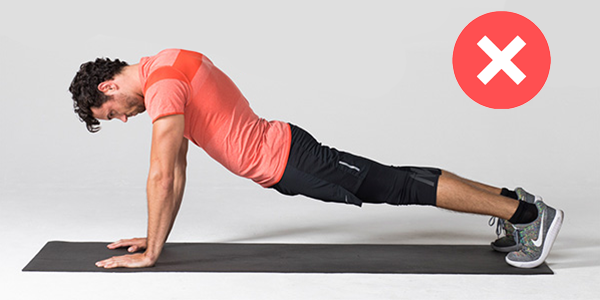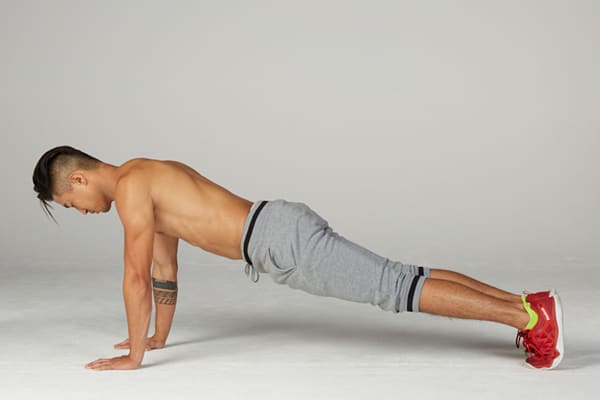The Five-Minute Plank Progression: Everything You Need to Know

Like reading, planking is fundamental.
“It’s the best exercise for core strength and stability,” says Rachel Butler-Green, CSCS, a certified strength and conditioning specialist in Los Angeles. “We all need need a strong core for everyday activity like walking. Planking targets all the major muscles of your core, including your deep abdominals and your back.”
It’ll also help your posture and endurance.
As with any exercise, setting goals is important — so if you’re looking to conquer that elusive five-minute plank, here’s how to work up to it.
How to Do a Five-Minute Plank
As with any exercise, learning proper form is critical.
Once you master the basic pose, you can start to increase your time and mix things up with a number of variations (more on those in a second).
1. Start with a forearm plank

“A forearm, or low plank, is the first progression of the exercise and it’s a great place to start planking,” says Andrew Bustos, ACE, NASM, a certified personal trainer in Abilene, Texas.
Start in pushup position, but with your forearms on the floor, elbows under shoulders, palms facing down.
2. Keep your body straight
Make sure your body is in a straight line from head to toe. “Make sure your legs are tight and engaged,” says Bustos. “You don’t want to sag your hips or have your butt hiked to the ceiling.”
3. Engage your core
Ensure you’re pulling in your lower abdominals throughout the entire hold. Glutes, too. That’s why planking is hard — and why it’s such a great exercise.
4. Don’t arch your back

“The most common form problems I see are having the hips too low and the lower back arched,” says Butler-Green. “This compresses the spine and guarantees you’ll finish your plank with a hurt back.”
Also, your lower back might unintentionally arch when your abs tire out — if that’s happening, time to stop. Set over.
5. Gradually increase your time
If you’re new to planking, don’t try for five minutes right away. “Holding for five minutes will feel like an eternity starting out, but start with 20 seconds, then add 10 seconds every day until you get to five minutes,” says Bustos.
6. Or work your way up to five cumulative minutes
If gradually increasing the length of your plank hold doesn’t work for you, Butler-Green suggests an alternate approach.
“The best way is to break down the hold into smaller intervals in every workout,” she says.
“Based on your current fitness level, you might start with five sets of one minute, or even six to seven sets of 45 seconds,” she says.
Then she suggests you gradually increase your interval times until you can do a five-minute plank.
Depending on your current abilities, you can also work to reduce recovery time between sets.
One example: If you’re starting with five one-minute sets, you could catch your breath for one minute between each one, then, once you’ve nailed that, reduce the recovery time to forty-five seconds between sets, then thirty.
7. Proceed to the straight-arm plank

Once you’ve mastered the five-minute forearm plank, Bustos says you’re ready for the next variation: the full plank, with your arms straight.
Start in pushup position, with your elbows and hands under your shoulders, and follow the same steps above.
As before, depending on your ability to hold your position over time, you can gradually increase one set from day to day until you can hold it for five minutes or you can do smaller sets that add up to five minutes total, then increase your interval times.
8. Don’t let yourself get bored
Bustos recommends that beginners seeking to mix things up could start a plank on their knees, or elevate their hands by placing them on a park bench, chair or ottoman, or a step box at the gym.
Intermediate and advanced plankers can place their feet in suspension trainers like the TRX, or extend the hands or feet further from the body.
“You can always elevate the feet while holding a plank, as well,” he says.
“For clients who are ready for more advanced holds, I’ll add plank variations to keep their minds off the static hold,” says Butler-Green.
9. Stay focused on those incremental goals
If you’re just starting out and a five-minute plank seems impossible, just focus on those day-to-day improvements.
“The buildup is what’s important,” says Bustos. “It’s just like anything else — you have to practice.”
